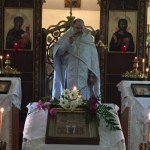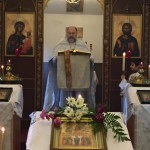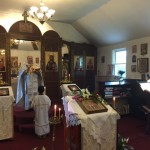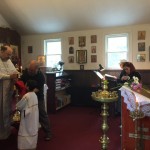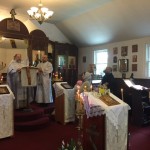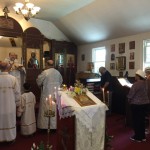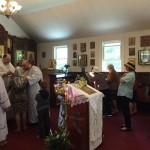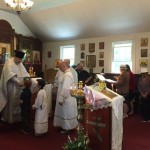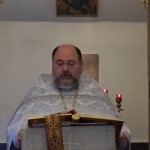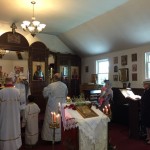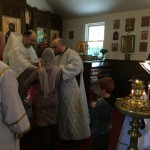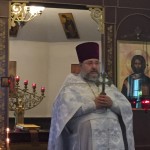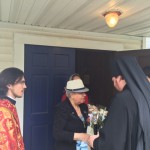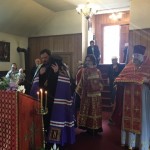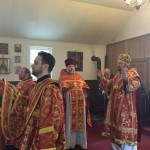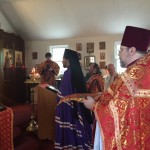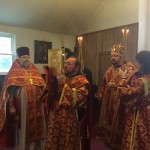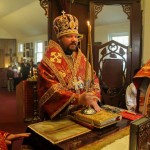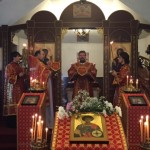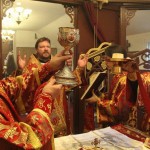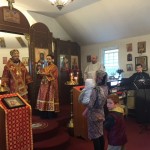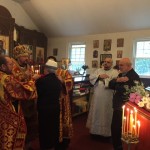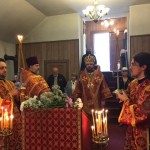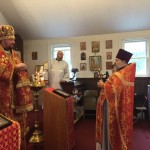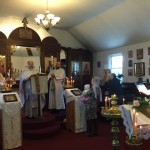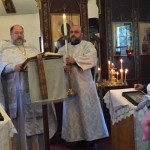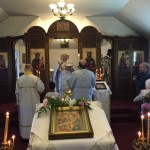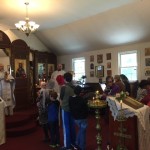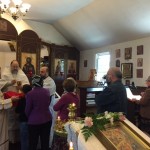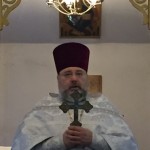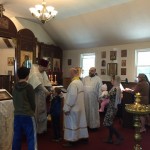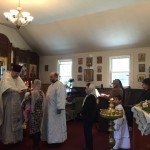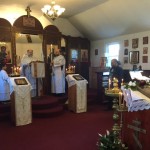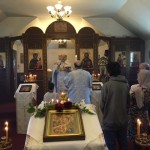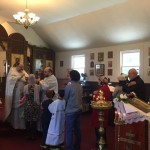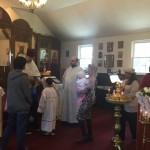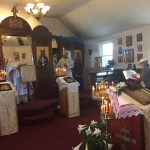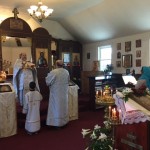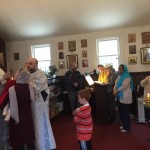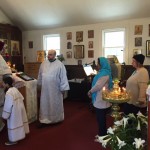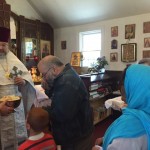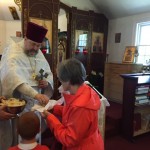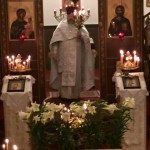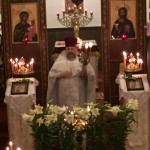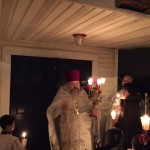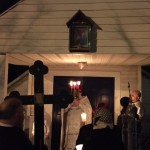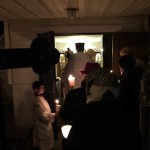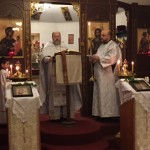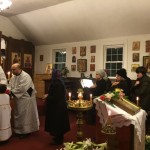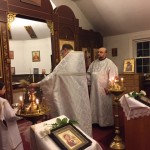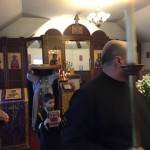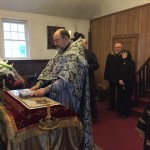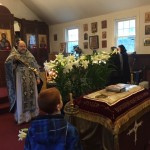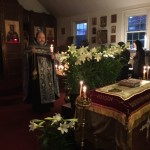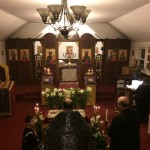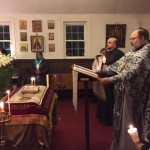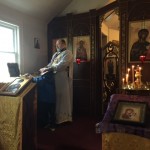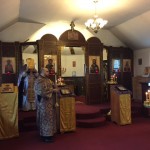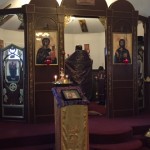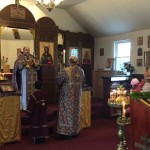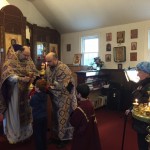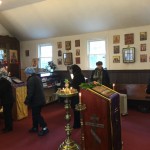On May 21 the Orthodox Church celebrated great holy day of the Ascension of the Lord into Heaven. This year it also fell on the feast of the Holy Apostle and Evangelist John the Theologian. On that day of a double celebration we had a nice service at St. George Church. Our Rector, Archpriest Igor Tarasov celebrated the Divine Liturgy.
Following the Scripture lessons he preached a homily about the Lord’s holy day and the feast of the Saint. He pointed out that the goal of every Christian is to be in heaven, with the Lord Jesus who ascended there to prepare a place for us. Heaven is our eternal homeland. We must love that homeland and strive to become worthy to enter it. However, this does not mean that we should despise our earthly homeland. According the teaching of the Holy Fathers, we have to love our country where we were born or the country we now live in. And although our goal is to be in heaven, it does not mean that we have to despise our earthly life and try to make it shorter. No, we have to endure all our sufferings and difficulties in order to be worthy of heaven. Our Lord Himself gave us a perfect example when He became Man. He did not rush to go back to heaven. He had to teach, to perform miracles, to fulfill His ministry on earth. Then He had to suffer, to die on the cross. Even after he had risen from the dead, He did not return to heaven but stood on earth for 40 days instructing His Disciples. Only after fulfilling all His mission on earth the Lord left His Apostles and returned to His heavenly abode. In addition, an example of life of St. John the theologian teaches us to persevere in our earthly life. St. John lived a long life and passed away when he was over a hundred years old. He was not killed like other Apostles but had to live a long life full of persecutions and great works. Finally, he passed away and his body was not discovered by his disciples. This example teaches us to endure and to serve God all our life.
And finally, if we love God, we must love our fellow men and women. St. John the Theologian teaches that “if a man say, I love God, and hates his brother, he is a liar: for he that does not love his brother whom he has seen, how can he love God whom he has not seen?” (1 Jn. 40, 20). Only Christian life lived to the fullest extent of our spiritual ability and filled with the works of faith and love may grant us a passage to eternal blessedness in heaven.
After the Liturgy dismissal the Rector and altar server came out of the sanctuary to the middle of the church and performed a rite of glorification, singing the Troparia of the Ascension and of St. John the Theologian, as well as the kontakion and magnification of the feast.

